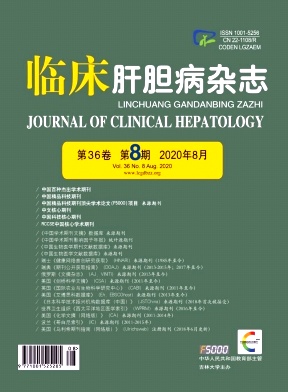ObjectiveTo investigate the value of baseline HBsAg quantification in predicting HBsAg clearance in pegylated interferon α-2b (PEG-INFα-2b)-treated chronic hepatitis B (CHB) patients with a low level of HBsAg. MethodsA retrospective analysis was performed for 51 HBeAg-negative CHB patients who achieved HBV DNA <20 IU/ml after nucleos(t)ide analogue (NA) treatment, had a normal level of alanine aminotransferase (ALT) and an HBsAg quantification of >0.05 IU/ml and <1500 IU/ml, and received sequential PEG-INFα-2b treatment in Hepatobiliary Hospital of Jilin from March 2016 to September 2018. The clinical data of serum HBsAg quantification, anti-HBs quantification, HBV DNA quantification, and ALT level were collected at baseline and at weeks 12, 24, 36, and 48 of treatment. At week 48 of treatment, 19 patients with HBsAg clearance were enrolled as response group, and 32 patients without HBsAg clearance were enrolled as non-response group. The Mann-Whitney U test was used for comparison of non-normally distributed continuous data between two groups, and the receiver operating characteristic (ROC) curve was used to analyze the value of baseline HBsAg quantification in predicting HBsAg clearance at week 48 of treatment. ResultsAt week 48 of treatment, 19 patients (37.25%) achieved HBsAg clearance, among whom 7 (7/19, 36.84%) had a baseline HBsAg quantitation of ≤10 IU/ml, 9 (9/19, 47.37%) had a baseline HBsAg quantitation of >10 IU/ml and ≤100 IU/ ml, 1 had a baseline HBsAg quantitation of >100 IU/ml and ≤500 IU/ml, 1 had a baseline HBsAg quantitation of >500 IU/ml and ≤1000 IU/ml, and 1 had a baseline HBsAg quantitation of >1000 IU/ml and ≤1500 IU/ml; 8 patients (15.69%) achieved HBsAg seroconversion, among whom 4 had an anti-HBs level of >10 IU/L and ≤100 IU/L, 3 had an anti-HBs level of >100 IU/L and ≤500 IU/L, and 1 had 500 IU/L. The response group had a significantly lower baseline HBsAg quantitation than the non-response group [16.38 (2.25-61.62) IU/ml vs 363.73 (110.14-927.72) IU/ml, Z=-4.442, P<0.001]. At weeks 12 and 24 of treatment, both groups had an increase in serum ALT level, and there was a significant difference between the response group and the non-response group [week 12: 82.00 (55.00-123.00) U/L vs 49.00 (34.00-65.00) U/L, Z=-2.286, P=0.005; week 24: 78.00 (46.00-88.00) U/L vs 48.08 (29.79-71.75) U/L, Z=-2.617, P=0.009]. At weeks 12 and 24 of treatment, the response group had a significantly greater reduction in HBsAg than the non-response group [week 12: 91.77% (49.62%-99.28%) vs 44.03% (15.75%-68.90%), Z=-3.312, P=0.001; week 24: 99.00% (98.00%-100.00%) vs 77.94% (37.02%-89.60%), Z=-5.100, P<0.001]. The patients were followed up for 24 weeks after drug withdrawal, and the results showed that all 19 patients with HBsAg clearance achieved sustained response and 7 patients achieved HBsAg seroconversion. The ROC curve analysis showed that baseline HBsAg quantification predicted HBsAg clearance rate at week 48 of treatment, with an optimal predictive value of 86.36 IU/ml, an area under the ROC curve of 0.875 (95% confidence interval: 0.764-0.986), a sensitivity of 84.4%, and a specificity of 84.2%. The positive predictive value and negative predictive value were 84.21% and 84.37%, respectively. ConclusionIn CHB patients with a low level of HBsAg (≤100 IU/ml) treated by NAs, sequential PEG-INFα-2b treatment can significantly improve HBsAg clearance and seroconversion and help with HBsAg clearance at week 48 of treatment especially in those with a significant reduction in HBsAg and a significant increase in ALT in the early stage of treatment. Baseline HBsAg quantification <86.36 IU/ml can predict HBsAg clearance at week 48 of treatment.














 DownLoad:
DownLoad: